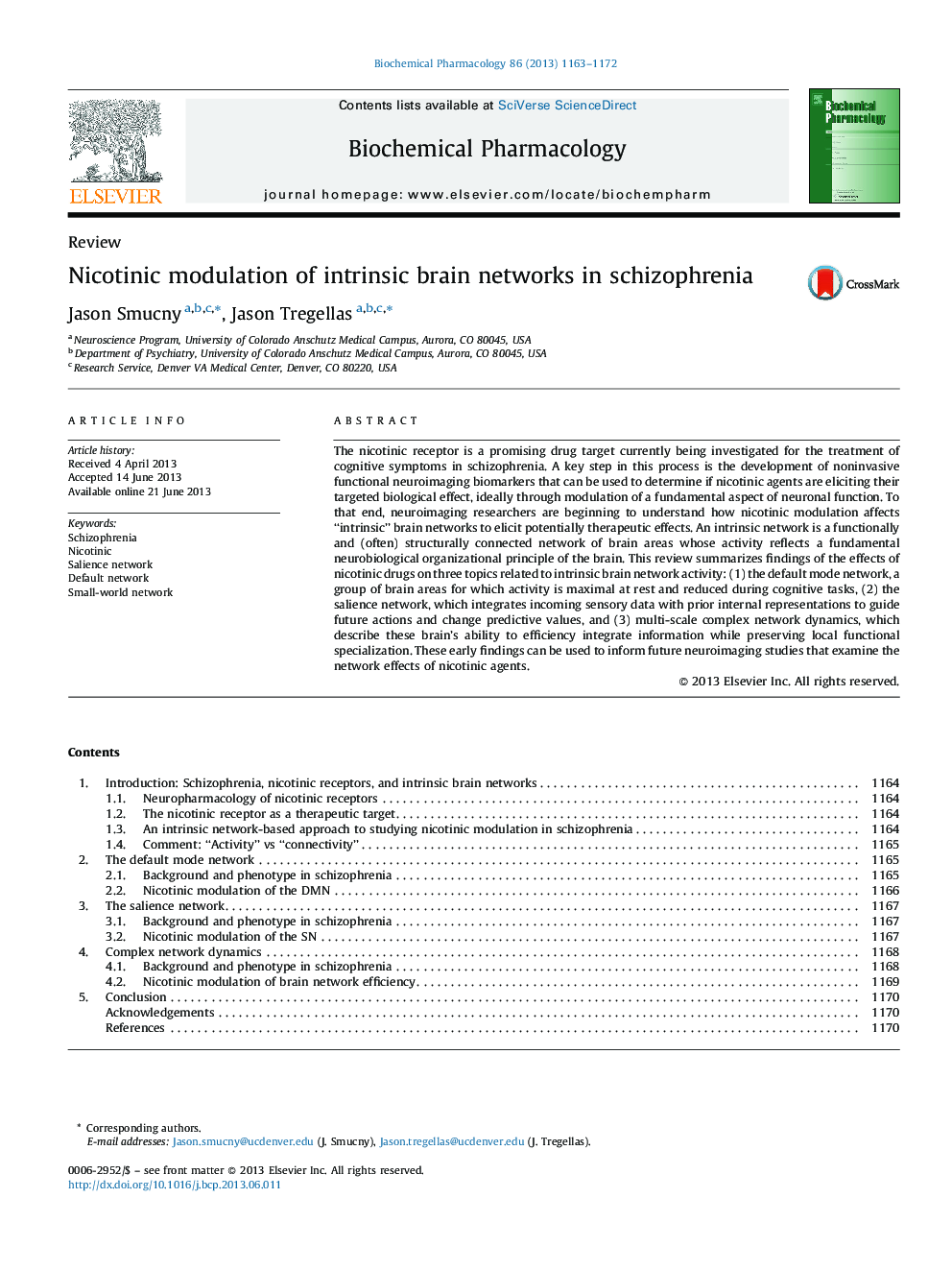| Article ID | Journal | Published Year | Pages | File Type |
|---|---|---|---|---|
| 2512553 | Biochemical Pharmacology | 2013 | 10 Pages |
The nicotinic receptor is a promising drug target currently being investigated for the treatment of cognitive symptoms in schizophrenia. A key step in this process is the development of noninvasive functional neuroimaging biomarkers that can be used to determine if nicotinic agents are eliciting their targeted biological effect, ideally through modulation of a fundamental aspect of neuronal function. To that end, neuroimaging researchers are beginning to understand how nicotinic modulation affects “intrinsic” brain networks to elicit potentially therapeutic effects. An intrinsic network is a functionally and (often) structurally connected network of brain areas whose activity reflects a fundamental neurobiological organizational principle of the brain. This review summarizes findings of the effects of nicotinic drugs on three topics related to intrinsic brain network activity: (1) the default mode network, a group of brain areas for which activity is maximal at rest and reduced during cognitive tasks, (2) the salience network, which integrates incoming sensory data with prior internal representations to guide future actions and change predictive values, and (3) multi-scale complex network dynamics, which describe these brain's ability to efficiency integrate information while preserving local functional specialization. These early findings can be used to inform future neuroimaging studies that examine the network effects of nicotinic agents.
Graphical abstractThe effects of nicotinic agents on three topics related to intrinsic network activity are discussed in this review: the default mode network, the salience network, and complex network dynamics.Figure optionsDownload full-size imageDownload as PowerPoint slide
